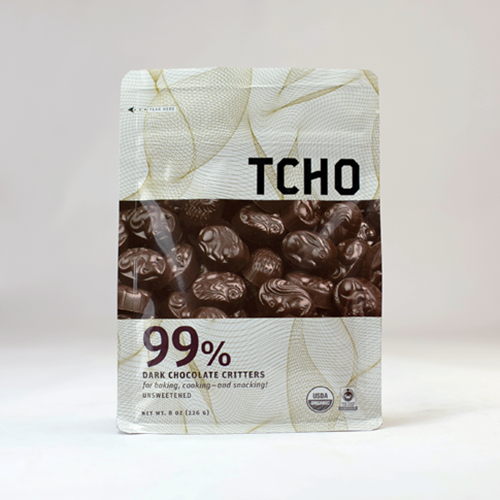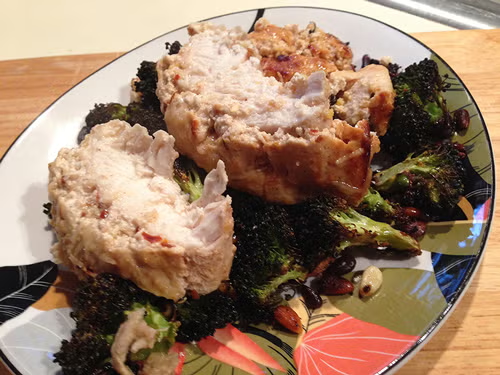
Dark Chocolate and Sugar
When I reduced eating highly processed foods, I lowered both my salt and sugar. I never liked salt all that much, and never added it to recipes in cooking, and even then (by some calculation) I went from 3000-3500 mg/day to what is now an average of 900-1000 mg/day without doing anything else to avoid it. My sensitivity to detecting salt got correspondingly higher, and I am nearly convinced that all the fancy chefs in the world have just overloaded their salt-detection systems by insisting that it needs to be added to everything or you are not a good cook.
What I did not see coming was the comparable sensitivity to tasting sugar.
This took longer, but I am convinced it is real. My calibration point is dark chocolate.
First off, I did like sugar. I was a fan-atic for creamy sweet milk chocolates, ganaches, toffees, brittles (and pastries, cakes, muffins, eclairs, frosted scones, and you get the idea). And I would leave the Hershey’s “Special Dark” in the bag. I was not at all keen on that taste.
In May 2015, I went cold turkey on all of that sugar.
Of all the things I have learned about sugar, the two most interesting things have been (1) until the early 1800s, the daily intake of refined sugar was on the order of 5 g/day – it was simply not a part of the everyday diet, whereas the latest averages in the US diet are at 150 g/day; and (2) the warnings we were getting in the 1970s and 1980s were right.
The most insightful academic work was carried out by Sidney W. Mintz (1922-2015). Mintz was a professor at the Johns Hopkins University, where he taught anthropology. His academic specialization focused on the anthropology of food, with a particular focus on the consumption and commodification of sugar.
This anthropology of sugar shows how the cultivation of this crop and the use of the end product affected people in two parts of the world: the Caribbean islands and the British Isles. The book gives a short history of sugar and its origins in New Guinea and subsequently the Philippines and India, how it spread west with the Arabs and eventually found its way to Europe. It goes on to tell of sugar’s role in European Imperialism, and how the production of this “drug food” lead to the use of slavery in pre-industrial plantation agriculture; and conversely, how its eventual use by the common people of England helped to adapt them to the industrial economy, where one had to eat quickly of prepared foods during an assigned break in their work schedule.
Mintz’s 1986 book, “Sweetness and Power: The Place of Sugar in Modern History” is a good starting point. A reviewer writes: My greatest insight from this book derives from the above understanding that the increasing use of sugar in the diets of “modernized” people reflects upon its ability to provide calories (thus energy) at a cheap price, in a product with “shelf-life” that allows people to focus on their work (for their employers) for eight or more hours per day.
However much sugar I was taking in each day, getting down to about 18-20 g/day has been astoundingly easy. And if not for the 10 g sugar in the Light Yogurt I have for breakfast, I’d be at half of that, even.
Missing chocolate, I started to do a bit of reading on the dark chocolates and their sugar content. And as anyone may have noticed, boutique chocolate making has been booming in the US for the last few years, so there are definitely choices out there.
To my surprise, the Ghirardelli 72% bar, with 3 g of sugar in an 11 g piece (one of the squares), was quite tasty. The normal milk chocolate is about 32% cocoa with 8 g in an 11 g piece.
I am surprised to report that I seem to have picked up the same sort of taste sensitivity to sugar that you see happening with salt. Over the course of 12-18 months, I kept sliding up the cocoa scale, from 70% to 85% to 90%. I accidently opened an 85% bar without noticing the label while I was on a trip and digging the thing out of my backpack, and the difference in the taste with respect to the 90% that I was expecting was immediate and not all that pleasant.
The 90% bar has 3 g of sugar in 30 g (6 blocks).
And finally, a little over 2 years later, I am astounded by the delightful taste of some of the 99% and 100% chocolates.
The 99% bar has 1 g of sugar in the 50 g bar. And, with the intensity of the taste, a little goes a long way.
If you are interested, do not start with these high percentages. But if my experience says anything, it takes a while to wean off the taste of sugar, but it opens a new world.
The most accessible 99% bar is by Lindt, which is mass-produced and can be found at many high end stores. The 50g bar is usually about $2.50-3.50 in the stores.
The best recommendation I have for a boutique 100% that is astoundingly good is by a San Francisco maker called Lamourette. They have a big line of high % chocolates, but the 100% bar is really special. The 100g bar is $8.00.
Although a slightly different taste, the TCHO company, out of Berkeley CA, makes a melt in your mouth 99% that I like. An 8 oz bag (225g) of little nibbling pieces is about $10.00.



 I was reading some ways to marinate chicken for grilling. Not that I actually grill anything any more, by the way, probably due laziness more than anything else, and I like spending dead time reading recipes on line.
I was reading some ways to marinate chicken for grilling. Not that I actually grill anything any more, by the way, probably due laziness more than anything else, and I like spending dead time reading recipes on line. I decided that a spiced yogurt chicken would go well on a bed of roasted broccoli, so I used these two recipes to develop that part of the meal – one from the
I decided that a spiced yogurt chicken would go well on a bed of roasted broccoli, so I used these two recipes to develop that part of the meal – one from the